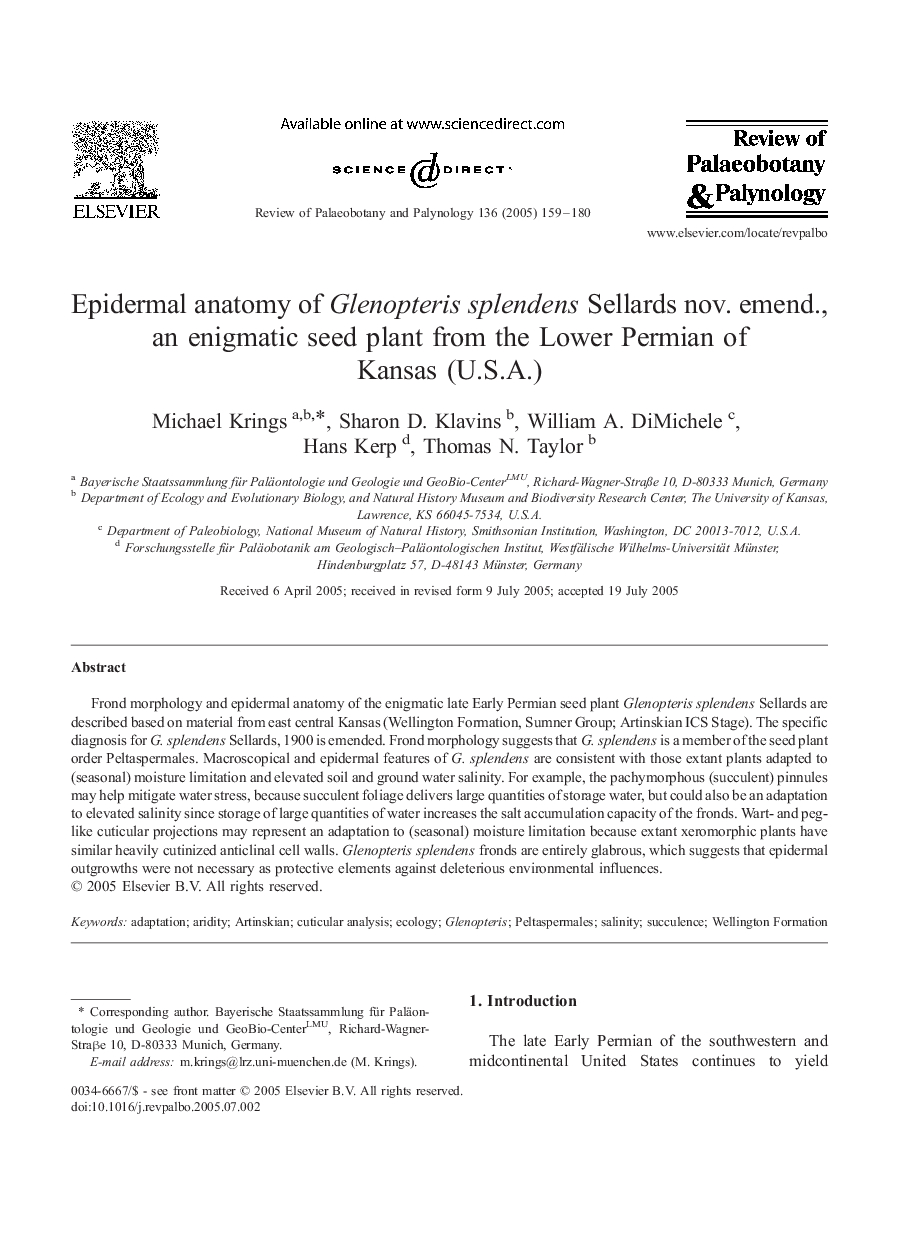| Article ID | Journal | Published Year | Pages | File Type |
|---|---|---|---|---|
| 10122047 | Review of Palaeobotany and Palynology | 2005 | 22 Pages |
Abstract
Frond morphology and epidermal anatomy of the enigmatic late Early Permian seed plant Glenopteris splendens Sellards are described based on material from east central Kansas (Wellington Formation, Sumner Group; Artinskian ICS Stage). The specific diagnosis for G. splendens Sellards, 1900 is emended. Frond morphology suggests that G. splendens is a member of the seed plant order Peltaspermales. Macroscopical and epidermal features of G. splendens are consistent with those extant plants adapted to (seasonal) moisture limitation and elevated soil and ground water salinity. For example, the pachymorphous (succulent) pinnules may help mitigate water stress, because succulent foliage delivers large quantities of storage water, but could also be an adaptation to elevated salinity since storage of large quantities of water increases the salt accumulation capacity of the fronds. Wart- and peg-like cuticular projections may represent an adaptation to (seasonal) moisture limitation because extant xeromorphic plants have similar heavily cutinized anticlinal cell walls. Glenopteris splendens fronds are entirely glabrous, which suggests that epidermal outgrowths were not necessary as protective elements against deleterious environmental influences.
Related Topics
Physical Sciences and Engineering
Earth and Planetary Sciences
Palaeontology
Authors
Michael Krings, Sharon D. Klavins, William A. DiMichele, Hans Kerp, Thomas N. Taylor,
